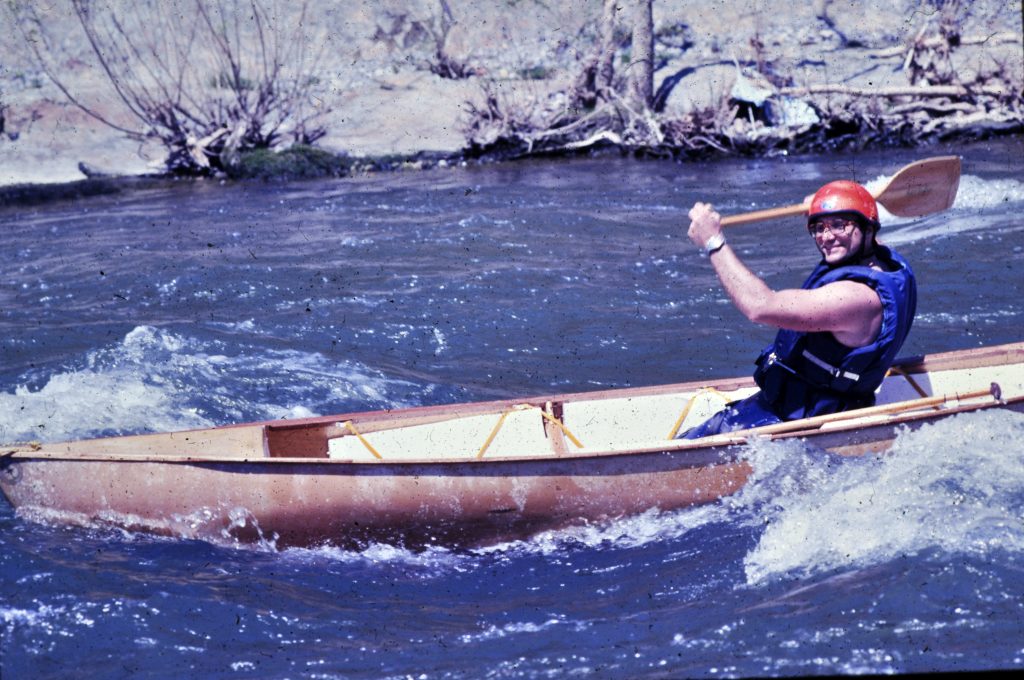
Like a lot of young people, my introduction to canoeing was at summer camp in the 1970s. Located in Wernersville, Pennsylvania, Camp Conrad Weiser is a YMCA camp serving the greater Reading area. The canoeing program was at a marked disadvantage. Unlike many camps located on small lakes, mine sat on top of a mountain. There was a swimming pool, but swimming activities dominated the schedule. At the time, I didn’t believe you could do much with a 12’ Grumman canoe in a pool. (I would later learn otherwise from the Penn State pool slaloms—but that’s a story for another day.)
I don’t remember exactly how I ended up in charge of the canoeing program, but I did. Maybe I drew the short straw. Either way, I inherited a landlocked canoeing program on top of a mountain without a lake. We had a canoe trailer with six 17’ Grumman canoes. Half had welded aluminum patches, courtesy of rocks in the mighty Schuylkill River. There wasn’t much sizzle to the program.
Although we had canoes, we needed water—and a vehicle to haul the trailer. The day camp had a van, but it didn’t have a trailer hitch. It sat unused from 10:00 a.m. to 3:00 p.m.—an opportunity. It took at least a week and a half to commandeer the van and get a trailer hitch installed. We packed lunches from the kitchen, and we were off to the mighty Schuylkill River.
Transportation in hand, we needed something to do on the river. I got hold of the old Marion Clawson Red Cross Canoeing book. I was about two pages ahead of the students. One example will suffice: the book discussed poling. Going up a set of rapids sounded like fun—so we tried it. I fashioned a couple of 10’ poles from ash saplings in the woods. Book in hand, we learned how to pole 17’ Grumman canoes up the rapids.
I had to sell the program. At the end of breakfast in the dining hall, all the program leaders would announce their activities for the day. One after another, they droned on at the microphone. When it was my turn, I would pause. The campers anticipated and knew what was coming. On cue, and in a loud voice, I would pronounce an elongated “Canoeing.” The camp would erupt in response with a loud, equally elongated “Canoeing.” We had canoeing mania. I went to a counselor reunion a year ago, and all the counselors responded to me at the microphone with that same loud, drawn-out “Canoeing.” After all those years, they remembered the steak’s sizzle.
My story is not atypical. In the 1970s, I started out in Grumman canoes. We learned how to make closed fiberglass canoes in John Sweet’s garage using molds borrowed from the latest European boats. From closed canoes in the 1980s, I went back to open canoes and eventually to my Shredder. Along the way, I became professionally involved in boating safety, education, and the ACA, serving on its board.
My takeaway: when we sell paddlesports, remember to sell the steak’s sizzle. The rest will follow.
Thank you to Dr. Robert Kauffman for sharing his story, The Steak’s Sizzle, as part of the ACA Story Project! With humor and heart, Robert reminds us that paddlesports are not only about technique or equipment, but about passion, community, and finding joy in the journey.
About the Author
Dr. Robert Kauffman is a lifetime ACA member who first joined in the 1970s and currently serves on the ACA Board of Directors. A Professor Emeritus at Frostburg State University, Robert has dedicated his career to outdoor education, boating safety, and environmental stewardship. Whether leading on the river or from the boardroom, Robert continues to champion the ACA’s mission with energy, insight, and unmistakable sizzle.

